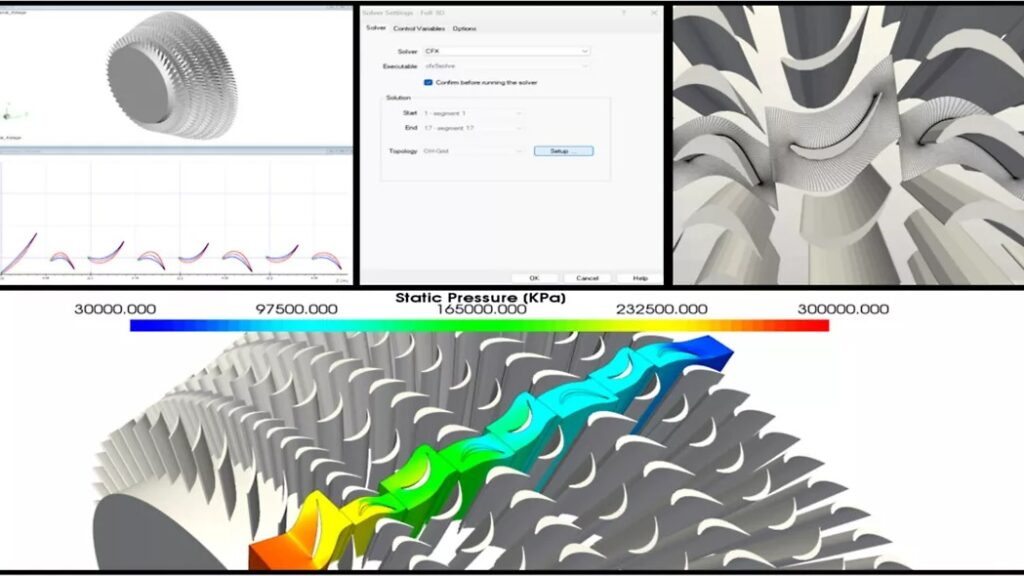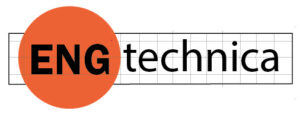
PITTSBURGH, PA, Feb 12, 2025 – Ansys and Concepts NREC have partnered to deliver an automated workflow that connects design tools with robust analysis tools for turbomachinery applications. Integrating CFX into AxCent enables designers to evaluate machine performance with increased predictive accuracy — shortening design cycles and improving performance for applications including compressors, turbines, pumps, fans, and turbochargers.
Traditionally, turbomachinery engineers prepare preliminary blade designs in one software program and then perform detailed 3D analysis in a separate program, manually transferring data between the two. This continuous data exporting can cause massive time delays, require additional computational resources, and increase costs associated with production.
The new technology integration enables Ansys customers using Concept NREC’s design tool to obtain machine performance results from the CFX solver within the same interface. The parameters are automatically created for all blade rows, while the physics setup can be defined in an uninterrupted workflow. This “one-click” approach to CFD simulation allows engineers to verify turbomachinery designs using Ansys’ solvers before manufacturing. CFX enables robust analysis – ideal for design optimization – which can help customers design high-efficiency machines while meeting stringent standards for product safety and environmental impact.
For example, AtmosZero, the innovative manufacturer of Boiler 2.0, decarbonizes steam for industrial and commercial purposes. AtmosZero’s first-of-its-kind product is a modular, air-sourced, electrified steam boiler replacement with zero emissions that delivers high temperature, low-cost decarbonized steam with high efficiency.
“At AtmosZero, we are passionate about helping reduce our customers’ carbon footprint and solving for industrial decarbonization through our innovative electrified steam boilers,” said Meha Setiya, senior aerodynamics engineer at AtmosZero. “We use Ansys and Concepts NREC to design and validate the high-temperature compressors that are responsible for generating high-temperature steam from the heat pump. The new software integration will enable our teams to save significant time and resources as we develop technology to decarbonize steam and reduce global emissions from fossil-fueled boilers.”
Looking ahead, Ansys and Concepts NREC plan to expand integration capabilities to include a broader variety of fluids in addition to features that will enable users to capture the system’s evolving dynamic behavior.
“We are thrilled to deliver this much needed — and highly requested — capability to our customers,” said Jonathan Bicknell, vice president of products & engineering at Concepts NREC. “The expanded partnership improves the workflow between turbomachinery design and advanced physics simulation. Allowing for not just a streamlined workflow, but improved designs for better performance and safer products.”
“When running CFD analyses, it is critical to gain multiphysics insights of the design as soon as possible to ensure product performance before prototyping begins,” said Shane Emswiler, senior vice president of products at Ansys. “With the Ansys-Concepts NREC software integration, customers can develop complex products like jet engines significantly faster through an automated end-to-end workflow.”
Source: Ansys
About Ansys

Ansys, founded in 1970, specializes in engineering simulation software. It offers a comprehensive suite of tools for structural analysis, fluid dynamics, electromagnetic field simulation, and more, enabling industries to design and test products virtually. Ansys software has enabled innovators across industries to push boundaries by using the predictive power of simulation. Serving sectors such as aerospace and defense, automotive, energy, industrial equipment, materials and chemicals, consumer products, healthcare, and construction, Ansys supports innovation across diverse fields. As of 2023, the company reported annual revenues exceeding $2.3 billion and employed over 6,200 people worldwide. Headquartered in Canonsburg, Pennsylvania, Ansys continues to advance engineering simulation technologies, empowering organizations to enhance product development processes.

